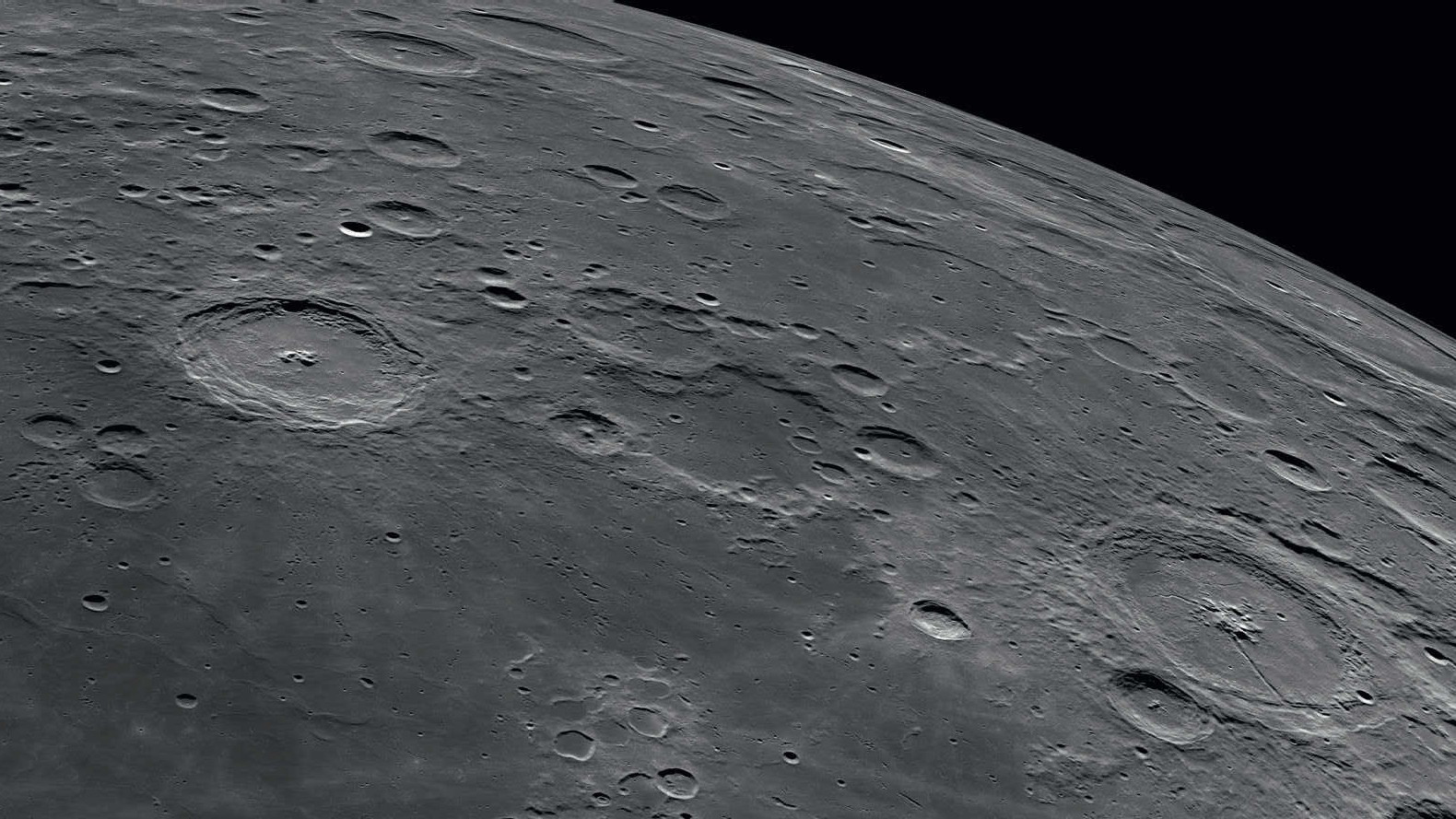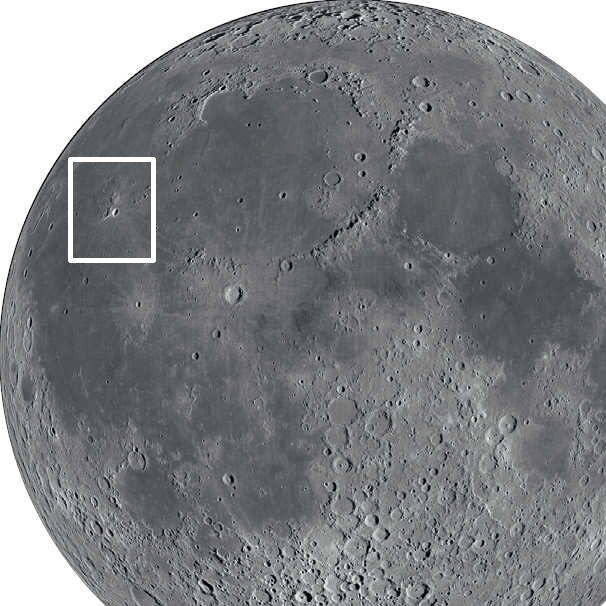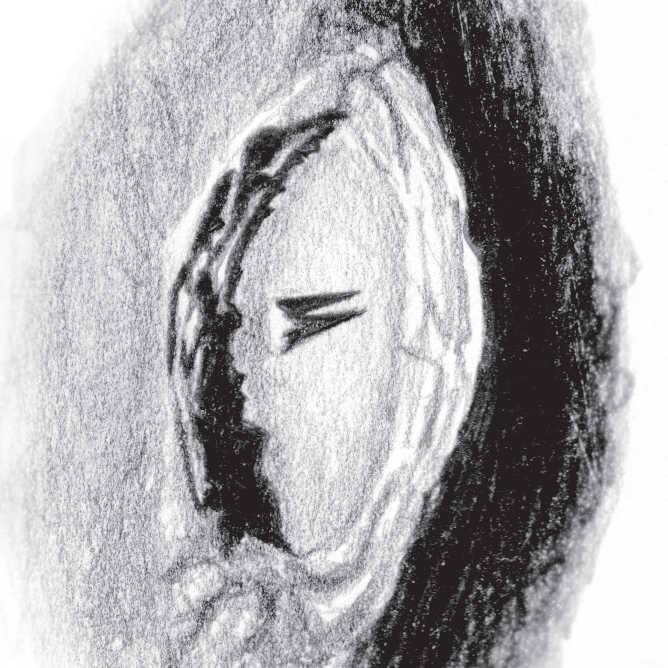Highlights on the Moon's edge
At the eastern edge of the Moon there are two beautiful craters, which can be observed from the third day after New Moon.
 Langrenus and Petavius are two typical lunar impact craters with central mountains. NASA/GSFC/Arizona State University
Langrenus and Petavius are two typical lunar impact craters with central mountains. NASA/GSFC/Arizona State UniversityNear the eastern edge of the Moon – and at the same longitude – there are two craters that can be observed from the third day after New Moon: Langrenus at the eastern edge of Mare Fecunditatis (Sea of Fertility) and Petavius at the southern end of the sea.
Typical impact craters
 Both craters are located close to the Moon's edge. NASA/GSFC/Arizona State University
Both craters are located close to the Moon's edge. NASA/GSFC/Arizona State UniversityThe 132 km wide and 4,300 m deep crater Langrenus is a typical impact crater with clearly defined wall and the characteristic terraced steps of the sloping inner walls. Its central mountains, which stand up to 1,400 m above the crater base, consist of two main peaks. With these features Langrenus is often compared with Copernicus, which is located in the centre of the Moon. The lava-flooded crater floor is largely flat, only in the north and north-west are there some low hills. At around 100 m high, these elevations are easily recognisable when the Sun is low.
Langrenus’ ray system is not very pronounced. The pale ejecta are mainly grouped into three rays, which stand out well against the dark surface of Mare Fecunditatis. The trio of lava-filled craters Atwood (29 km), Bilharz (43 km) and Naonobu (35 m) to the north-west offer a beautiful contrast to Langrenus.
Rare double rim wall
The large 177 km wide impact crater Petavius is, like Langrenus, in well-preserved condition. The 3,300 m tall terraced walls tower above the convex crater floor in the west; to the east they are 1,800 m tall. The walls have a rare distinctive feature: the south-west area close to crater Wrottesley (58 km) splits into two separate sections, forming a double rim. If the seeing is good, the central mountain range divided into a large number of individual peaks will be visible. These mountain peaks are almost as high as the walls.
Sometimes dark, sometimes light
Starting from this central elevation, Petavius’ highlight can be found stretching to the south-west: the main rille of Rimae Petavius. This 80 km long fissure can be seen through a telescope at the morning terminator as a thin black line, which clearly stands out from its background. At the evening terminator, however, it appears as a bright line, since the inside of the rille is now illuminated. Further, more difficult to observe sections of the rille are located north and northeast of the central mountain range. Rimae Petavius were discovered by the German astronomer Hieronymus Schröter.
Light ray in Hyginus
 Drawing of Langrenus: the mountains cast two long shadows on the crater floor when the Sun is low. Lambert Spix
Drawing of Langrenus: the mountains cast two long shadows on the crater floor when the Sun is low. Lambert SpixAround 7 days after New Moon, a wedge of light appears on Hyginus’ shadowy crater floor, which gains in size with each passing day. Here, the rising Sun shines through Rima Hyginus, illuminating just a narrow strip. You’ll need a high enough magnification, preferably 150 times or more, due to the small size of the beam of light.
Best visibility 3 or 16 days after New Moon
Author: Lambert Spix / Licence: Oculum-Verlag GmbH
